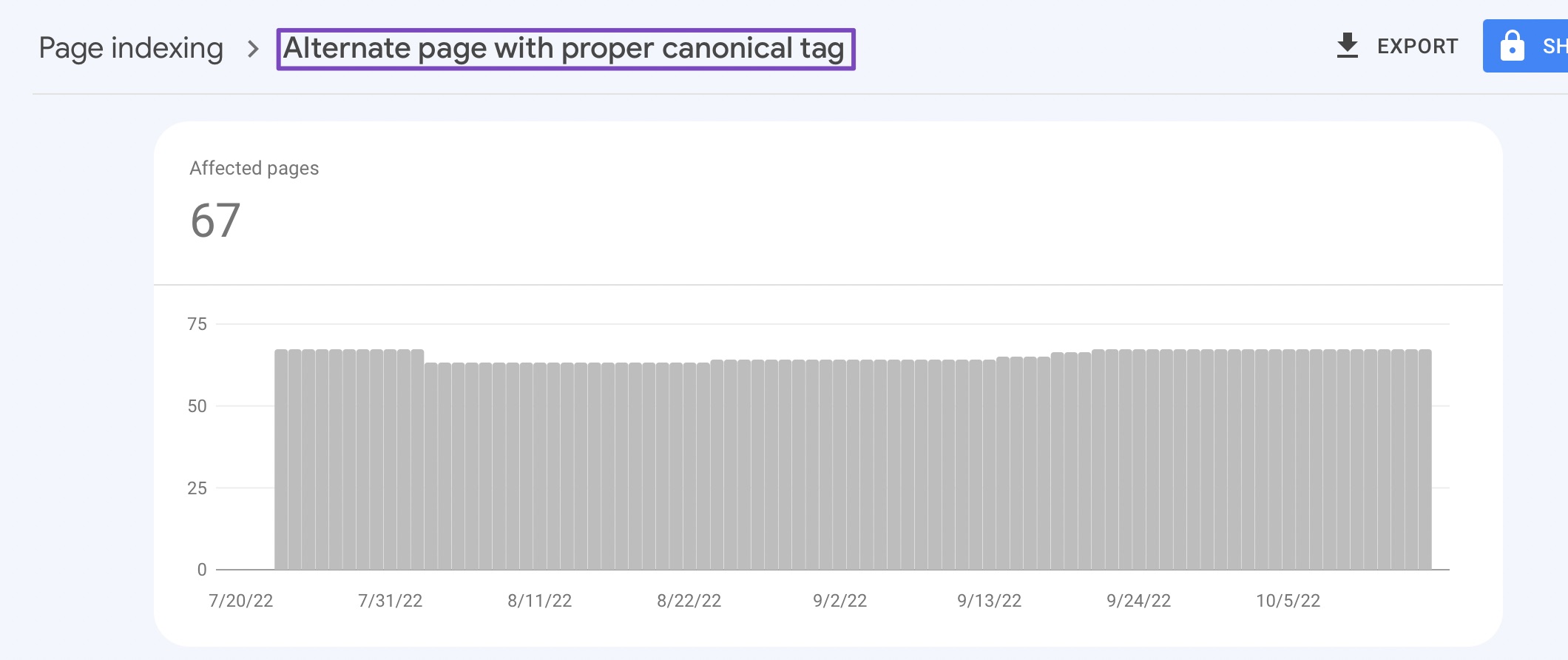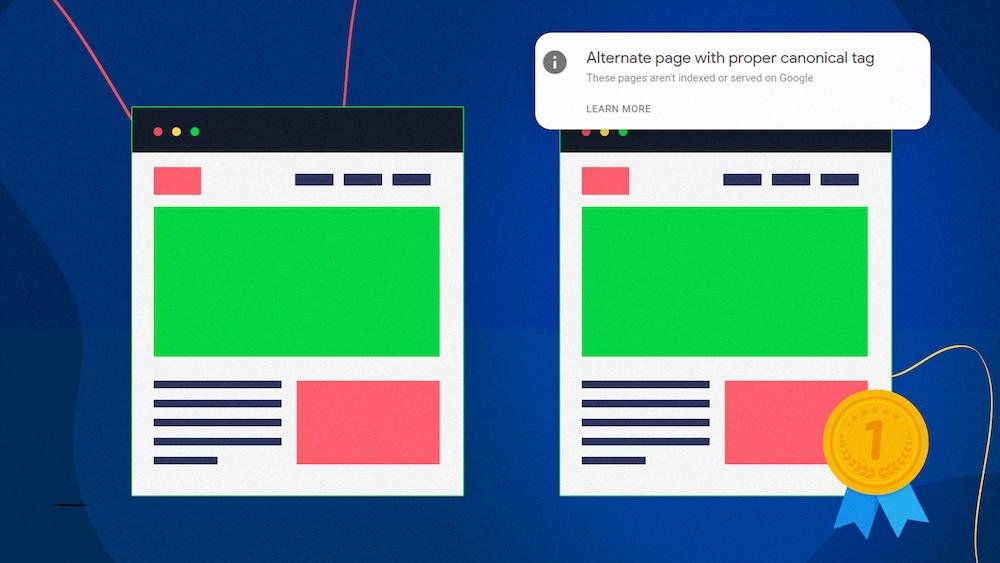Managing duplicate content can be tricky for website owners. Using canonical tags correctly helps search engines understand which version of a page to index.
Ensuring proper use of canonical tags improves SEO and avoids content confusion. When there are multiple versions of a page, search engines might not know which one to prioritize. This can lead to lower rankings and missed opportunities. Using canonical tags lets you tell search engines which page is the main one.
This boosts your site’s visibility and helps maintain your SEO efforts. In this post, we’ll explore four effective ways to use alternate pages with proper canonical tags. You’ll learn how to keep your content organized and search engine-friendly. Let’s dive in and make your content strategy stronger!
Boost Seo With Canonical Tags
Canonical tags can significantly boost your website’s SEO. They help search engines understand which page is the primary one. This avoids duplicate content issues.
Using canonical tags correctly can improve your site’s ranking. It also ensures that search engines index the correct pages. Here are four ways to use canonical tags effectively.
Understanding Canonical Tags
Canonical tags are HTML elements. They tell search engines which page is the original. This helps avoid duplicate content penalties.
For instance, if you have similar content on multiple URLs, a canonical tag can point to the main URL. This makes it clear which page should be indexed. It’s a simple but effective tool.
Importance Of Canonical Tags
Canonical tags play a crucial role in SEO. They help consolidate link signals. This means that all links point to a single page.
Without canonical tags, search engines might index all versions of your content. This can dilute your page’s authority. It can also confuse visitors. Proper use of canonical tags ensures search engines focus on the right content.
Identify Duplicate Content
Identifying duplicate content is crucial for maintaining a healthy website. Duplicate content can harm your site’s SEO and confuse users. It is important to detect and manage it effectively. Let’s explore common causes and tools to identify duplicate content.
Common Causes Of Duplicate Content
Duplicate content can occur in various ways. Here are some common causes:
- URL variations: Different URLs showing the same content.
- Printer-friendly versions: Printer-friendly pages that duplicate main content.
- Session IDs: URLs with session IDs creating multiple versions of the same page.
- Copied content: Content copied from other websites or within your site.
- WWW and non-WWW versions: Both versions of URLs being indexed.
Tools To Identify Duplicates
There are many tools available to help identify duplicate content. Using these tools can save time and ensure accuracy.
Below is a table of popular tools and their key features:
| Tool | Key Features |
|---|---|
| Google Search Console | Identifies duplicate meta descriptions and title tags. |
| Screaming Frog SEO Spider | Finds duplicate pages and content on your site. |
| Copyscape | Checks for copied content from other websites. |
| Sitebulb | Highlights duplicate content issues and suggests fixes. |
Using these tools can help maintain your site’s quality and improve SEO. Regular checks ensure that duplicate content is identified and managed promptly.
Implementing Canonical Tags
Implementing canonical tags helps search engines understand which page version is the primary one. This prevents duplicate content issues. It improves your site’s SEO. Let’s explore how to implement these tags effectively.
Correct Placement
Place the canonical tag inside the HTML section. This ensures search engines find it quickly. Search engines read the head section first. It also helps maintain a clean code structure. Use the correct format: . Replace “URL” with the primary page link. This tells search engines which page to prioritize.
Html And Http Headers
Canonical tags can also be set in HTTP headers. This method suits non-HTML files like PDFs. Add the canonical link to the server’s HTTP response headers. This ensures search engines recognize the primary page. Use the Link: format. Replace “URL” with your primary page link.
Using Rel=canonical
Using Rel=Canonical tags helps search engines understand which URL is the master version. This is especially important when you have multiple pages with similar content. By specifying the canonical URL, you can prevent duplicate content issues. This ensures better search engine rankings and a streamlined user experience.
Syntax And Usage
The rel=canonical tag is straightforward to use. You place it in the head section of your HTML code. The syntax looks like this:
Ensure the href attribute points to the preferred URL. Use absolute paths, not relative ones. The canonical URL should be the most complete and authoritative version of the content.
Examples
Consider you have two pages with similar content. One is the main page, and the other is a variant. On the variant page, you would add the following code:
This tells search engines that the main page is the preferred version. Another example is for e-commerce sites. Product pages may have different URLs due to filters or sorting options. You can use the canonical tag to point to the main product page:
Applying these tags helps manage duplicate content. This improves SEO and provides clear signals to search engines about your content priorities.
Canonical Tags For Pagination
Canonical tags play a crucial role in managing duplicate content on your website. They are especially important for paginated content. Proper use of canonical tags ensures search engines understand the relationship between different pages. This helps in avoiding SEO pitfalls and improves your site’s visibility.
Handling Paginated Content
Paginated content often causes confusion for search engines. Canonical tags help clarify the preferred version of a page. For example, a blog post split across multiple pages can be tricky. Each page should have a canonical tag pointing to the main page. This tells search engines that the main page is the authoritative source.
Without proper canonical tags, search engines might treat each page as a separate entity. This can dilute your SEO efforts. Proper tagging consolidates all link equity to the main page. This boosts your search rankings and improves user experience.
Best Practices
Consistency is key when using canonical tags for pagination. Always link back to the main page of the series. This ensures search engines recognize the structure of your content. Use absolute URLs in your canonical tags. Relative URLs can confuse search engines and lead to indexing errors.
Regularly check your canonical tags. Ensure they point to the correct version of the page. Use tools like Google Search Console to monitor your site’s performance. Fix any issues promptly to maintain your SEO health.
Another best practice is to use the rel=”next” and rel=”prev” tags. These tags help search engines understand the sequence of paginated pages. Combine these tags with canonical tags for best results. This approach provides a clear roadmap for search engines to follow.

Credit: ampforwp.com
Cross-domain Canonical Tags
Cross-Domain Canonical Tags are essential for content that exists on multiple domains. They help search engines understand the preferred version of a page. This ensures proper indexing and prevents duplicate content issues across different domains.
When To Use
Use cross-domain canonical tags in the following situations:
- Content syndicated on partner websites
- Same content available on different country domains
- Content split across multiple domains for technical reasons
Implementation Steps
Implementing cross-domain canonical tags involves a few key steps:
- Identify the preferred domain for your content.
- Add the canonical link element in the head section of the HTML.
Here is a simple example:
Check the implementation using tools like Google’s URL Inspection Tool.
Ensure the canonical URL is accessible and not blocked by robots.txt.
Here is a summary in table format:
| Step | Description |
|---|---|
| 1 | Identify preferred domain |
| 2 | Add canonical tag in HTML head |
| 3 | Validate using tools |
| 4 | Ensure URL accessibility |
With these steps, your cross-domain canonical tags will be correctly implemented.
Avoid Common Mistakes
Using the correct canonical tags is crucial for SEO. Mistakes can cause duplicate content issues and lower your search engine rankings. Here are some common mistakes to avoid.
Incorrect Urls
Ensure your canonical URL is correct. An incorrect URL can lead to search engines indexing the wrong page. Always double-check the URL. A small typo can create big problems.
Make sure the URL is absolute, not relative. An absolute URL includes the full path, while a relative URL does not. Example:
| Incorrect | Correct |
|---|---|
Multiple Canonical Tags
Having multiple canonical tags on a single page confuses search engines. They won’t know which URL to prioritize. Stick to one canonical tag per page.
Ensure consistency. Use the same canonical tag across all similar pages. This helps search engines understand which page is the main one. For example:
Do not add another canonical tag pointing to a different URL. This will dilute your SEO efforts.
Avoid these mistakes to maintain strong SEO health. Correct canonical tags guide search engines properly, improving your site’s visibility.

Credit: www.onely.com
Monitoring And Auditing
Monitoring and auditing your website’s alternate pages with proper canonical tags is vital. It ensures search engines understand your content correctly. Regular checks help maintain the integrity of your SEO strategy.
Regular Audits
Conducting regular audits on your website can identify issues with canonical tags. This process ensures your tags are implemented correctly and consistently.
- Check for duplicate content and verify canonical tags.
- Ensure all alternate pages point to the correct canonical URL.
- Review your site structure for any unintentional changes.
Use a checklist to ensure nothing is overlooked. Regular audits help maintain the effectiveness of your SEO strategy.
Seo Tools For Monitoring
Various SEO tools can assist in monitoring canonical tags. These tools provide insights and automate the auditing process, saving time and effort.
| Tool | Features |
|---|---|
| Google Search Console | Detects canonical tag issues and provides reports. |
| SEMrush | Offers site audits and canonical tag checks. |
| Screaming Frog | Crawls your site to identify canonical tag problems. |
These tools help in monitoring and maintaining the health of your website’s SEO. Regular use of these tools can prevent potential issues and keep your site optimized.

Credit: rankmath.com
Frequently Asked Questions
What Is A Canonical Tag?
A canonical tag is an HTML element that helps prevent duplicate content issues. It tells search engines which version of a URL is the master copy.
Why Use Alternate Pages With Canonical Tags?
Using alternate pages with canonical tags prevents duplicate content issues. It consolidates link signals for identical or similar content, boosting SEO performance.
How To Implement Canonical Tags Properly?
To implement canonical tags properly, add the `` element in the HTML `
` section. Ensure the URL is correct.Can Canonical Tags Improve Seo?
Yes, canonical tags improve SEO by consolidating duplicate content and link signals. This ensures search engines index the preferred version, enhancing ranking.
Conclusion
Understanding canonical tags is crucial for effective SEO management. Use these methods to ensure your pages are optimized. Avoid duplicate content issues. Enhance your site’s visibility. Consistent SEO practices make a difference. Implement these tips now. See the benefits in your search rankings.
Stay ahead in the competitive digital landscape. Happy optimizing!




